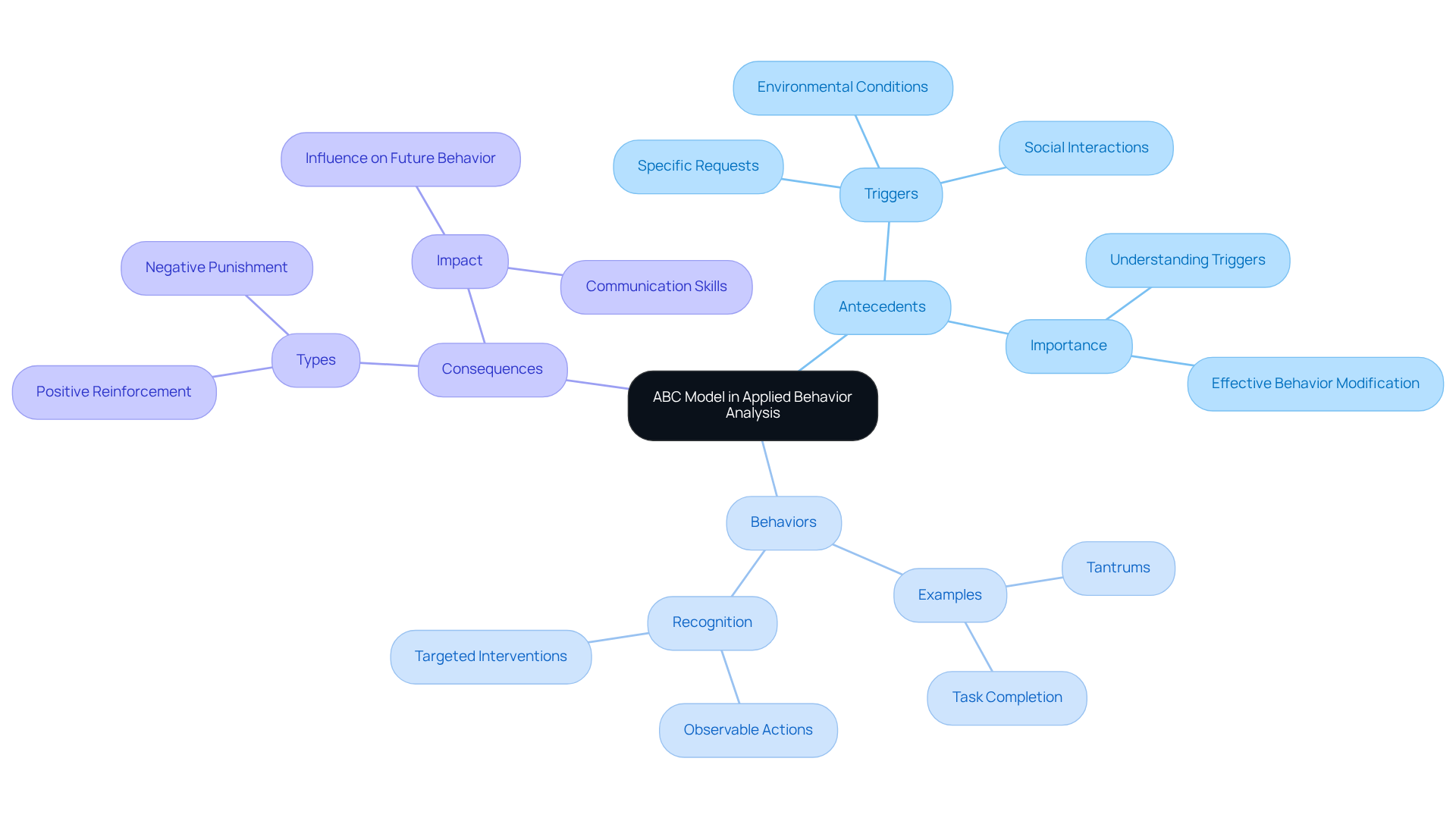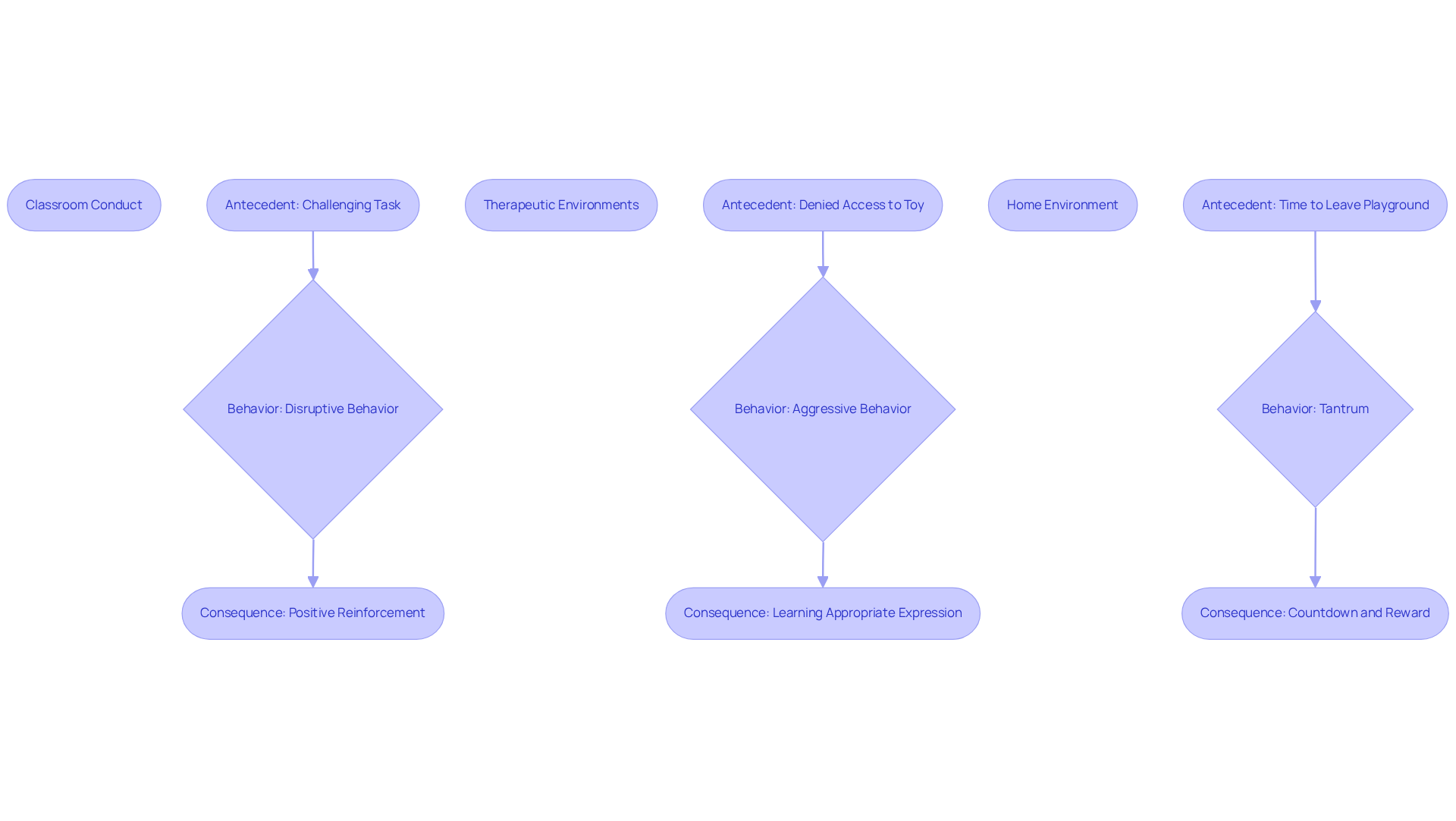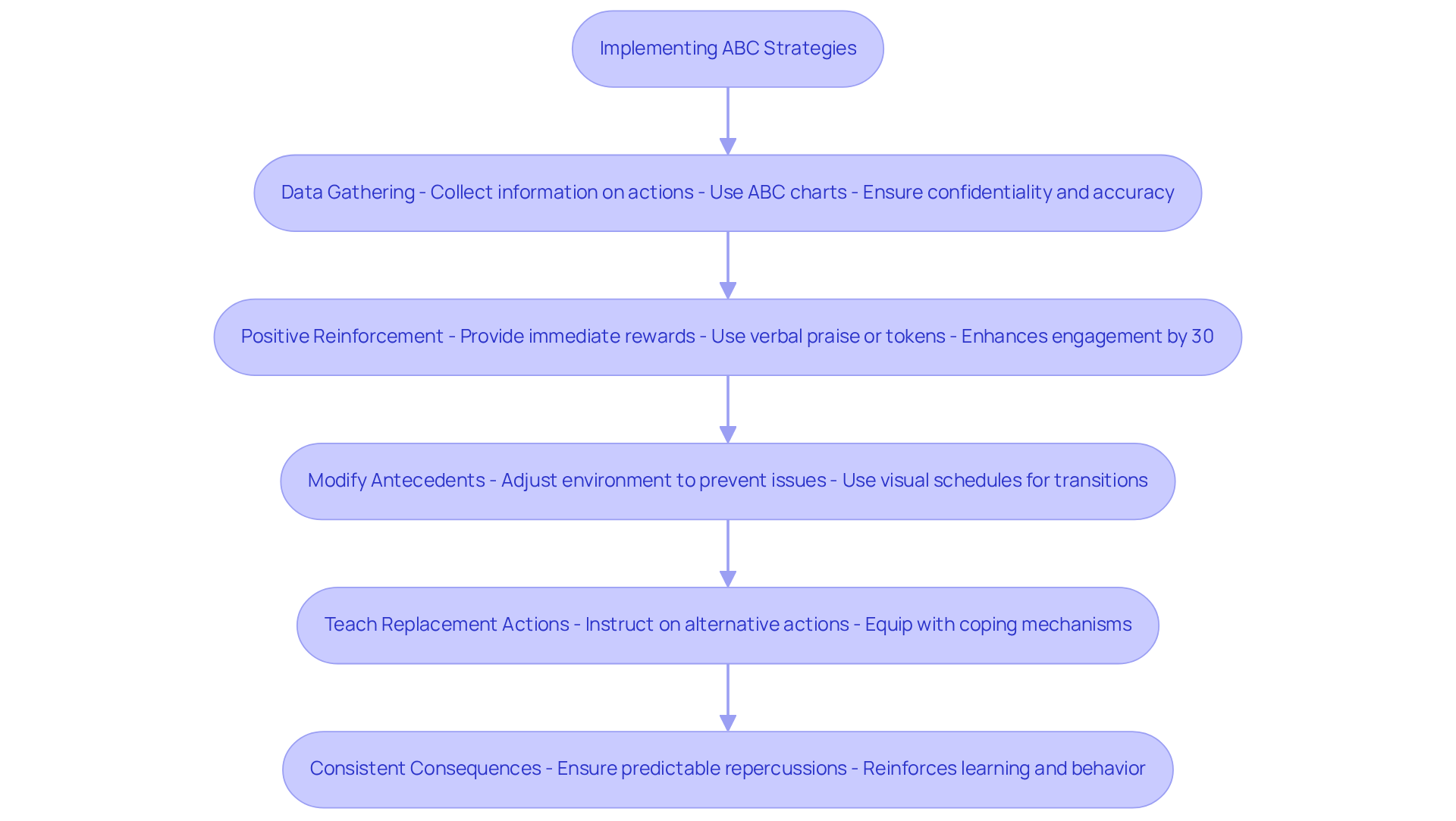July 7, 2025

The article presents the ABC model in Applied Behavior Analysis (ABA) therapy, a critical framework that encompasses Antecedents, Behaviors, and Consequences for understanding and modifying behavior. This model is essential in today’s behavioral therapy landscape, where the demand for Board Certified Behavior Analysts (BCBAs) continues to rise. Each component of the ABC model interacts intricately to influence behavior, and the article details practical strategies for implementation, demonstrating their effectiveness in various settings, including classrooms and therapy sessions.
How can these strategies transform your approach to behavior management? By leveraging the ABC model, practitioners can significantly enhance their effectiveness and outcomes. The insights provided here not only highlight the model's reliability but also serve as a guide for those looking to optimize their behavioral interventions.
Understanding the complexities of behavior is crucial in various settings, from classrooms to therapy sessions. The ABC model—Antecedents, Behaviors, and Consequences—serves as a powerful framework for analyzing and modifying actions effectively. By delving into this model, practitioners can unlock strategies that enhance adaptive skills, foster emotional regulation, and promote positive behavior change. Yet, how can one navigate the intricacies of this model to ensure ethical and effective interventions in the evolving landscape of ABA therapy? This exploration is essential for professionals seeking to elevate their practice and ensure impactful outcomes.
The ABC model in [Applied Behavior Analysis (ABA)](https://hireaba.today) serves as a foundational framework comprising three essential components:
By systematically examining these three elements, practitioners can utilize the abc of behavior to create focused strategies that effectively change actions. Recent studies emphasize the significance of understanding the abc of behavior, which includes antecedents, actions, and outcomes in the analysis of conduct, showing that customized interventions based on this framework can result in substantial enhancements in the management of actions. Practical applications of the ABC model have demonstrated success in various environments, including educational institutions and therapy sessions, where analysts employ this framework to develop efficient support plans. However, it is essential to acknowledge the criticisms surrounding ABA therapy, particularly concerns about its intensity and the historical use of punishment-based procedures. This necessitates ongoing dialogue and research to ensure ethical practices.

The ABC cycle serves as a foundational framework observable across a variety of real-world scenarios, particularly within educational and therapeutic settings:
These scenarios illustrate the practical application of the abc of behavior model, emphasizing its efficacy in understanding and modifying behavior across various contexts.

To effectively implement the ABC model in behavior management, consider the following strategies:
By applying these strategies, practitioners can create a structured approach to behavior management that fosters positive change and supports the development of essential skills in individuals. For instance, the implementation of ePraise at Valley Gardens Middle School has successfully boosted student morale, participation, and classroom attendance, demonstrating the effectiveness of these strategies in real-world settings.

The ABC model stands as a pivotal framework in Applied Behavior Analysis (ABA), encompassing antecedents, behaviors, and consequences that collectively inform effective behavior management strategies. By dissecting these components, practitioners can gain valuable insights into the triggers and outcomes of behaviors, leading to more tailored and impactful interventions.
Key insights throughout the article underscore the significance of understanding each element of the ABC model:
Real-world applications illustrate the model's versatility across various environments, from classrooms to therapeutic settings, where structured strategies can yield notable improvements in behavior and adaptive skills. The emphasis on positive reinforcement, data collection, and teaching replacement actions highlights the importance of a comprehensive approach to behavior modification.
Ultimately, mastering the ABC of behavior not only enhances individual outcomes but also fosters a supportive environment conducive to learning and growth. As the field of ABA therapy continues to evolve, embracing these strategies and remaining open to ethical considerations will be crucial in ensuring effective and compassionate behavior management practices. Engaging with the ABC model empowers practitioners, educators, and caregivers to create meaningful change, reinforcing the idea that understanding behavior is the first step toward transforming it.
What is the ABC model in Applied Behavior Analysis (ABA)?
The ABC model in ABA is a foundational framework that consists of three components: Antecedents (A), Behaviors (B), and Consequences (C), which are essential for understanding and modifying behavior.
What are Antecedents in the ABC model?
Antecedents are events or stimuli that occur right before an action. They can include environmental conditions, specific requests, or social interactions that trigger a response, and understanding these triggers is crucial for effective behavior modification.
How do Behaviors fit into the ABC model?
Behaviors refer to the observable actions exhibited by an individual, such as throwing a tantrum or completing a task. Recognizing and describing these actions is essential for implementing targeted interventions to address underlying issues.
What are Consequences in the context of the ABC model?
Consequences are the outcomes that follow an action, which can either reinforce or discourage its recurrence. These outcomes can be positive (rewards or praise) or negative (removal of privileges), and they significantly influence future behavior patterns.
What evidence supports the effectiveness of the ABC model in ABA therapy?
Research has shown that individuals receiving ABA therapy often improve in adaptive skills, with each additional 12 months of therapy correlating with a 4.46 point increase in the Adaptive Behavior Composite score. A study by O. Ivar Lovass Ph.D in 1987 found that 90% of children showed significant improvements after intensive ABA therapy.
How is the ABC model applied in real-world settings?
The ABC model is applied in various environments, including educational institutions and therapy sessions, where practitioners use this framework to develop effective support plans and interventions.
What criticisms exist regarding ABA therapy and the ABC model?
Criticisms of ABA therapy include concerns about its intensity and the historical use of punishment-based procedures. This highlights the need for ongoing dialogue and research to ensure ethical practices in behavior modification.
Our expert recruitment strategies and AI-driven sourcing ensure that you receive top-notch candidates quickly, without compromising on quality. Whether you’re looking for BCBAs, Clinical Directors, or RBTs, we’ve got you covered.